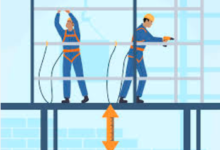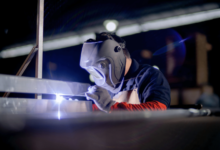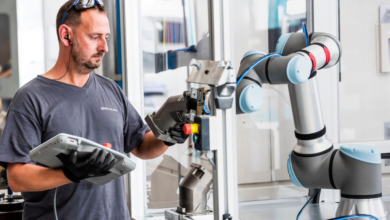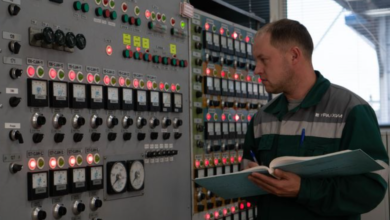Advancements in Sheet Metal Bending Technology
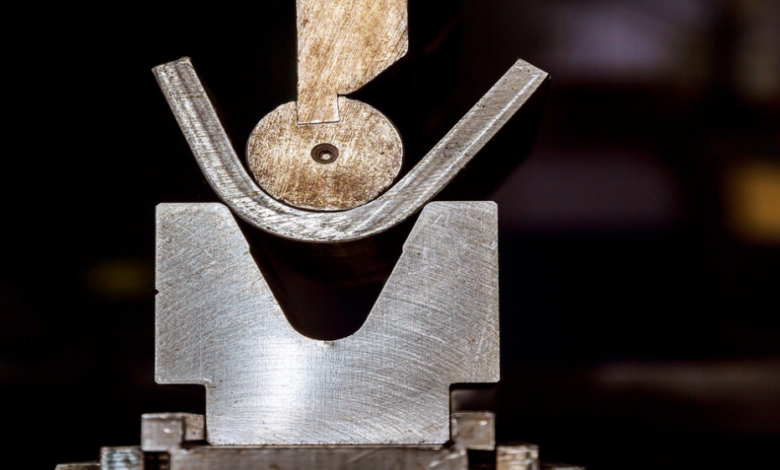
Introduction
The sheet metal fabrication industry continues to evolve with modern innovations designed to enhance precision, speed, and productivity. One of the most critical components in this field is the backgauge, which ensures accurate positioning of metal sheets during the bending process. It acts as a guide, controlling how the material is placed before each bend, and directly impacts the consistency and quality of the final product. As manufacturing technologies advance, this tool has become more sophisticated, integrating automation and digital control for improved efficiency.
Understanding the Role of a Backgauge
A backgauge is a mechanical system used in a press brake to position sheet metal accurately before bending. Its primary function is to ensure that the distance between the sheet edge and the bending point is precise for every operation. By moving forward and backward along the axis, it helps operators align materials without constant manual measurement.
In modern setups, operators input desired dimensions into a control unit, and the backgauge automatically adjusts its position. This eliminates errors caused by manual adjustments, making the bending process faster and more reliable.
See also: Toquitosplamose: Exploring the Meaning and Technical Implications
Essential Components of a Backgauge System
A typical backgauge system comprises several key parts that work together to achieve precision and repeatability in bending operations.
1. Gauge Fingers
Gauge fingers are the adjustable stops that come in direct contact with the sheet metal. They determine the reference point for each bend and are designed to withstand repeated use while maintaining accuracy.
2. Drive Mechanism
The drive mechanism moves the gauge fingers to the desired position. Depending on the machine, it may be operated by mechanical, hydraulic, or servo-electric drives. Servo systems are especially popular because of their speed, precision, and reliability.
3. Control System
The control system allows the operator to input and store bending parameters. Advanced systems, especially CNC-based ones, can automate multiple bending steps, reducing setup time and increasing efficiency.
4. Linear Guides and Sensors
These ensure the smooth and accurate movement of the gauge fingers. Sensors and encoders continuously monitor the position of the backgauge, allowing real-time adjustments to maintain precision.
Different Types of Backgauges
Depending on the level of automation and production requirements, various types of backgauges are used in the metal fabrication industry.
1. Manual Backgauge
This type is manually operated and suitable for small workshops or low-volume production. While it is less expensive, it requires more setup time and operator skill.
2. Motorized Backgauge
A motorized system uses electric motors to adjust the gauge fingers automatically. It offers higher speed and accuracy than manual versions, making it ideal for medium-scale operations.
3. CNC-Controlled Backgauge
CNC-controlled systems are the most advanced type, designed for high-volume and complex operations. They can automatically adjust for each bend in a programmed sequence, ensuring flawless accuracy and repeatability.
Benefits of Using a Backgauge in Fabrication
Incorporating a well-designed backgauge into metal fabrication brings numerous operational advantages that improve both quality and efficiency.
1. Precision and Accuracy
The primary benefit of using this system is achieving precise positioning for each bend. This ensures that all parts maintain uniform dimensions, reducing the likelihood of defects.
2. Increased Productivity
Automation minimizes manual measurement and adjustment, allowing operators to complete more bends in less time while maintaining consistent results.
3. Reduced Material Waste
Accurate bending means fewer errors and less scrap, helping manufacturers save on raw materials and production costs.
4. Consistency in Repetitive Tasks
For large production runs, maintaining consistent quality across thousands of parts is critical. The backgauge ensures identical results for every piece.
5. Enhanced Safety
Automation reduces the need for manual handling near the bending area, lowering the risk of workplace accidents and improving operator safety.
Applications Across Industries
The backgauge plays a vital role in multiple industries where sheet metal bending is required.
- Automotive industry: Used for producing structural parts and components like brackets and body panels.
- Aerospace industry: Assists in crafting lightweight and precise parts for aircraft structures.
- Construction sector: Helps in forming beams, cladding, and building supports.
- Appliance manufacturing: Used to create casings and frames for household and industrial appliances.
- Electronics industry: Ensures accuracy in forming enclosures and mounting panels.
These industries rely on accurate and repeatable bending processes, which are only possible with a dependable backgauge system.
Maintenance and Care for Long-Term Performance
To ensure consistent accuracy and performance, regular maintenance of the backgauge is essential. Dust, debris, and oil buildup can interfere with the movement and precision of its components. Recommended practices include:
- Cleaning gauge fingers and linear guides regularly.
- Inspecting for mechanical wear or loose parts.
- Calibrating the system periodically to maintain accuracy.
- Checking sensors and drive systems for alignment and performance issues.
Routine maintenance not only extends the lifespan of the equipment but also minimizes downtime and unexpected production interruptions.
Integration with CNC and Automation Systems
Modern backgauge systems are often integrated with CNC technology for enhanced control and efficiency. CNC systems allow operators to store multiple bend sequences, automatically adjusting the gauge for each step. This automation simplifies the production of complex parts and reduces setup time.
Integration with CAD/CAM software further enhances precision by enabling direct digital input of part designs. This digital link between design and manufacturing eliminates manual data entry, reduces human error, and improves overall workflow.
Future Trends and Innovations
As manufacturing technology continues to evolve, the backgauge is also seeing major advancements. Modern systems are becoming smarter, faster, and more connected. Future developments include:
- AI-based optimization: Systems that learn from production data to improve performance automatically.
- IoT connectivity: Real-time data collection for predictive maintenance and performance analysis.
- Touchscreen interfaces: Simplified operation with visual programming and quick setup adjustments.
- Full automation integration: Coordination with robotic arms for fully automated bending operations.
These innovations are set to redefine precision manufacturing by increasing output quality while minimizing human intervention.
Conclusion
The backgauge is a cornerstone of precision in the metal fabrication industry. Its ability to ensure accurate, consistent, and repeatable positioning during the bending process makes it indispensable for modern manufacturers. From small workshops to large-scale production facilities, the efficiency and precision offered by this tool enhance both productivity and quality.
As industries embrace automation, digitalization, and smart manufacturing, the evolution of the backgauge will continue, offering even greater levels of control and performance. Investing in advanced systems today ensures that manufacturers stay ahead in the competitive landscape of precision engineering and fabrication.
